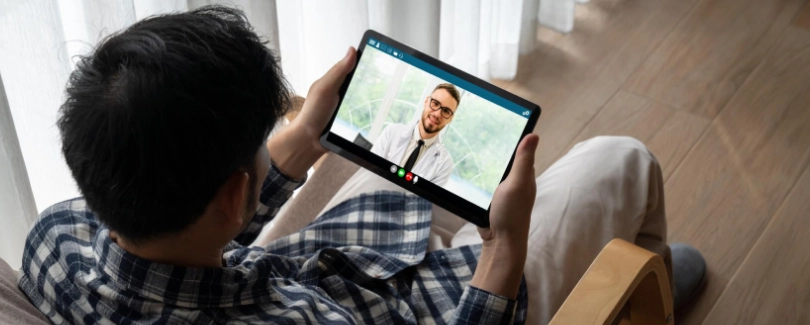Telepsychiatry offers a modern way to access mental health support from the comforts of your home. It connects people with psychiatric care from any location in the USA. This approach makes mental wellness more attainable. This approach makes mental wellness more attainable.
Telepsychiatry is a part of telemedicine that can include psychiatric evaluation, patient education, therapy, and psychiatric medication management.
What is Telepsychiatry?
Telepsychiatry delivers psychiatric assessment and treatment with the use of telecommunication technology. It consists of video calls. Furthermore, it includes audio-only or secure sending of medical information.

It offers many services that include psychiatric evaluation, individual therapy, group therapy, and family therapy. It also covers patient education and medication management.
Why Is It Needed?
It is estimated that over 57.8 million adults, or 23.1% of the adult population, are suffering from mental illness. This includes conditions from mild to severe and with different mental disorders.
This means that nearly 1 in 5 U.S. adults live with a mental illness. Among them, anxiety disorder is the most common which has affecting 42.5 million adults. The data validates that in the past, 46.5 million U.S. adults have experienced a substance use disorder. About 5.5% of adults have experienced severe mental illness.
In all these scenarios, a substantial number of individuals with mental illness, including youth, do not receive the necessary treatment.
According to the National Institute of Mental Health, in 2022, 30.0 million (50.6%) of 59.3 million adults with Any Mental Illness (AMI) received mental health treatment in the past year.
In the same year, there were 15.4 million adults aged 18 or older patients with Serious Mental Illness (SMI), and only 10.2 million (66.7%) received mental health treatment.
The data shows the acute need for treatments for mental disorders, but the treatment rate is much lower than expected.
The Clear Advantages of Virtual Psychiatric Care
Telepsychiatry reduces barriers to care. It helps people in rural areas who have mobility issues to get specialty mental health services. It also brings care directly to the patients’ location.

Patients save time and money. They avoid travel, time off work, and arranging childcare. Flexible scheduling options make it easier to attend appointments. Some people feel more comfortable discussing mental health from their own home. This private setting can reduce the stigma often associated with in-person visits.
Conditions We Address Through Telepsychiatry
Telepsychiatry service is used for effectively many mental health conditions. These include anxiety disorders, depression, post-traumatic stress disorder (PTSD), and attention-deficit/hyperactivity disorder (ADHD). The services also address bipolar disorder, obsessive-compulsive disorder (OCD), and substance use disorder. It helps to educate patients about the health conditions, precautions, symptom control, therapy, prescribing, and medication monitoring for these conditions.
Many people experience more than one mental health condition at a time. These are called co-occurring disorders.
Telepsychiatry can provide integrated care that addresses multiple health issues at the same time. This leads to improved overall mental health, bringing into notice co-occurring conditions and integrated care positions. Solid Psychiatry provides detailed, holistic mental health services, and not just episodic treatment. This broadens the appeal to a large patient demographic with complex needs.
Get a Smooth and Secure Virtual Experience
Solid Psychiatry protects patients’ health information whether care is virtual or in-person. The practice follows HIPAA rules to keep personal information safe. Telehealth platforms use secure connections and data encryption. This protects information during sessions. Only authorized providers can access patient data. We audit security measures for risks.
Contact the practice today to learn more or schedule an appointment. Solidpsychiatry.org is a partner in achieving mental wellness.
